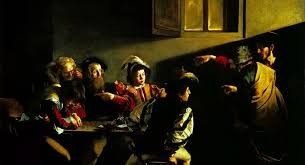Light played a crucial role in the development of Renaissance art, influencing both the technique and the emotional impact of the paintings created during this period. Artists of the Renaissance sought to achieve a realistic representation of the world, and light was a key tool in this pursuit. By mastering the depiction of light and shadow, Renaissance painters brought depth, dimension, and vitality to their works, ultimately elevating them to a new level of realism.

The Advent of Chiaroscuro
One of the most significant advancements in the use of light during the Renaissance was the development of chiaroscuro, an Italian term meaning “light-dark.” This technique involved using strong contrasts between light and shadow to create a sense of volume and three-dimensionality on a two-dimensional surface. Artists such as Leonardo da Vinci and Caravaggio became known for their mastery of chiaroscuro, skillfully applying light to enhance the realism of their subjects.
For instance, in The Last Supper (1495–1498), Leonardo da Vinci used light to direct the viewer’s attention to the central figure of Christ. The illuminated figures in the scene appear to emerge from the surrounding darkness, giving the composition depth and emphasizing the spiritual significance of the moment.
Natural Light and Atmospheric Effects
Renaissance artists also paid careful attention to the natural light found in their environments. They studied how sunlight interacted with objects and surfaces, casting shadows and highlighting particular features. This understanding of light allowed them to create more convincing depictions of the natural world, with a focus on how light affected textures, colors, and spatial relationships.
In paintings such as Raphael’s The School of Athens (1511), light is used not only to create depth but also to define the space within the composition. By employing a clear source of light coming from a central point, Raphael established a harmonious balance between the figures and the architecture. This technique helped to convey a sense of order and structure, which was central to the ideals of the Renaissance.
Symbolism and the Use of Light in Religious Art
In addition to its role in creating realism, light in Renaissance art often carried symbolic meanings, particularly in religious paintings. The illumination of holy figures such as Christ, the Virgin Mary, and saints was used to signify their divinity and purity. The careful use of light to distinguish between the sacred and the profane was an essential element of religious works during this period.
In works such as Titian’s Assumption of the Virgin (1516–1518), light floods the figure of the Virgin Mary as she ascends into heaven, emphasizing her holiness and divine status. The surrounding figures are cast in shadow, further highlighting her prominence and the sacred nature of the moment.
Celebrating Art and Enjoyable Leisure
NewZealandArtist.com showcases talented artists and their creations, promoting creativity and cultural appreciation. While exploring unique artworks and artistic expression, taking occasional breaks with trusted entertainment platforms like jokacasino Casino Login can provide a fun and responsible way to relax. Balancing artistic engagement with mindful leisure ensures a fulfilling and inspiring experience.
The Influence of Light on Composition and Emotional Impact
Renaissance painters also recognized that light could shape the emotional atmosphere of a painting. By manipulating light and shadow, artists were able to convey mood, intensity, and narrative focus. The positioning of light could alter the way a subject was perceived, influencing how viewers engaged with the painting emotionally.
One example of this is Caravaggio’s The Calling of Saint Matthew (1599–1600). In this work, Caravaggio used dramatic light to highlight the moment of Matthew’s calling by Christ. The stark contrast between the light on Matthew and the surrounding darkness draws attention to the divine nature of the moment, creating a heightened emotional impact for the viewer.
The Legacy of Light in Renaissance Art
The mastery of light in Renaissance art laid the groundwork for future developments in Western painting. Artists of later periods, including Baroque and Romantic painters, would build on the techniques perfected during the Renaissance. The study of light, both as a physical phenomenon and a tool for emotional expression, became a cornerstone of art throughout the centuries.
Conclusion
Light was an essential element in Renaissance painting, serving both as a technical tool for creating depth and realism and as a symbolic device in religious and narrative works. The careful study and application of light in this period revolutionized art, allowing artists to create powerful, lifelike images that captured the human experience in all its complexity. Through techniques like chiaroscuro and the use of natural light, Renaissance painters were able to transform their canvases into vibrant, dynamic works that continue to influence artists to this day.


Pingback: generic viagra 75mg